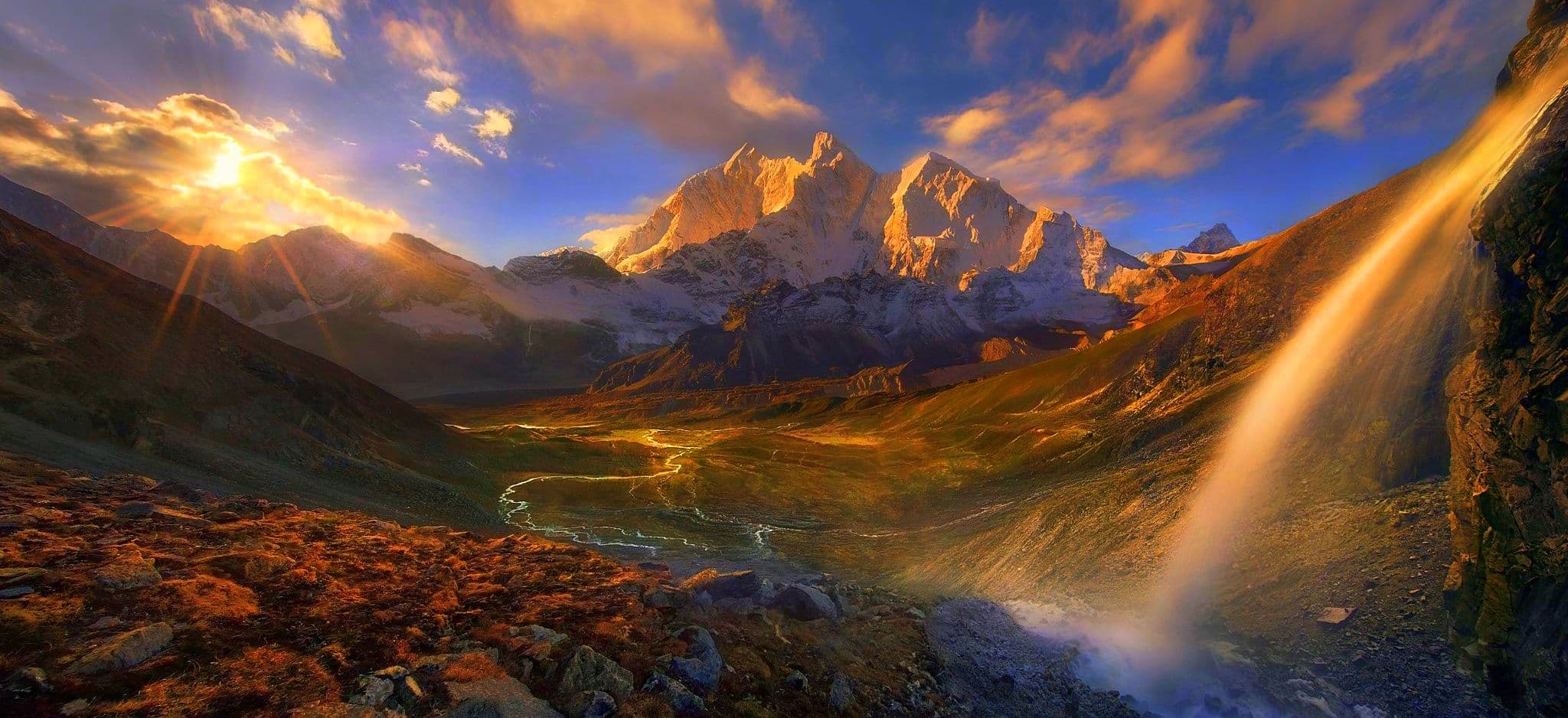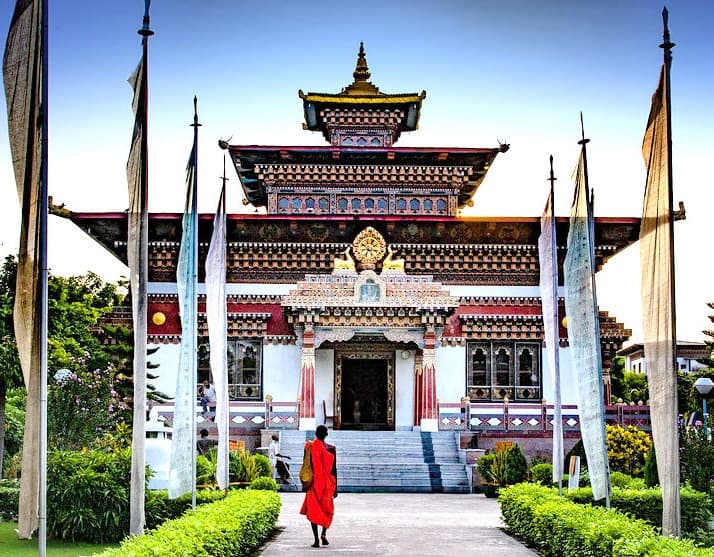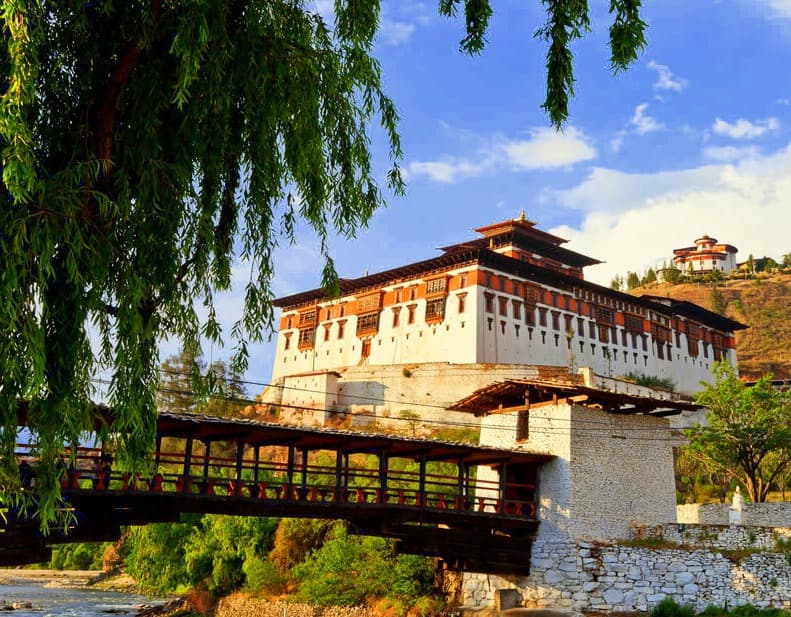- Potala Palace Photography
- Jokhang Temple Photos
- Yamdrok Lake Photography
- Mount Everest Base Camp Photos
- Namtso Lake Photography Spots
- Tashilhunpo Monastery Photography
- Gyantse Kumbum Photos
- Mount Kailash Photography
- Shigatse Dzong Photos
- Sera Monastery Photography
- Best Time for a Photography Tour in Tibet
- Essential Tips for Photography in Tibet
- FAQs of the Top Photography Spots in Tibet: Capture the Magic
Capturing the breathtaking beauty and profound spirituality of Tibet is a dream for many photographers. This mystical land offers a diverse range of photography spots, from the iconic Potala Palace in Lhasa to the tranquil shores of Yamdrok Lake and the majestic vistas at Mount Everest Base Camp. Each location provides unique opportunities to explore Tibet’s rich culture and stunning landscapes, including the serene Jokhang Temple, the awe-inspiring Namtso Lake, and the historic Tashilhunpo Monastery. Whether you’re interested in Tibet landscape photography or capturing the intricate details of Tibetan monasteries, Tibet promises an unforgettable visual journey. Discover the top photography spots in Tibet and immerse yourself in the magic of this extraordinary region.
At Druk Holidays, we pride ourselves on being the best company for top photography spots in Tibet. Our extensive knowledge and experience offer unparalleled access to the most breathtaking and iconic locations. Our expertly crafted itineraries ensure that you capture the magic of Potala Palace, the spiritual essence of Jokhang Temple, the serene beauty of Yamdrok Lake, and the majestic grandeur of Mount Everest base camp. We guide you to the pristine Namtso Lake, the historic Tashilhunpo Monastery, the unique Gyantse Kumbum, and the sacred Mount Kailash, providing you with the best opportunities for Tibet landscape photography. Our deep understanding of Tibetan culture and holy sites ensures you get the most out of your Tibetan monasteries and sacred lakes photography. Trust Druk Holidays to take you on a journey through the top places for photography in Tibet, where every moment becomes a lasting memory.
Potala Palace Photography
The Potala Palace stands as a monumental symbol of Tibetan history and spirituality, perched majestically on the Red Hill in Lhasa. As one of the most iconic landmarks in Tibet, it offers photographers a unique blend of architectural splendor and rich cultural heritage. With its imposing structure, vibrant colors, and intricate details, the Potala Palace is a must-visit for anyone looking to capture the essence of Tibetan architecture and spirituality.

- Iconic Architecture: Capture the grandeur of the palace’s white and red walls, contrasting beautifully against the Tibetan sky.
- Panoramic Views: The view from Chakpori Hill provides a sweeping perspective of the palace and Lhasa city, especially breathtaking at sunset.
- Golden Hour Photography: The warm glow of the golden hour enhances the palace's intricate details and majestic presence.
- Night Photography: The illuminated Potala Palace creates a magical ambiance, ideal for striking night shots.
- Interior Beauty: Inside, photograph the ornate chapels, murals, and relics that showcase Tibetan art and history.
- Surrounding Landscapes: Capture the surrounding landscapes, including the distant mountains and cityscape, to complement the palace’s grandeur.
- Cultural Context: Include the daily life and activities of local pilgrims and monks around the palace to add a cultural dimension to your shots.
Potala Palace photography offers a wealth of opportunities to explore and document one of Tibet’s most cherished landmarks. From its dramatic architecture and panoramic views to its intricate interiors and vibrant cultural context, every angle of the Potala Palace tells a story waiting to be captured.
Jokhang Temple Photos
The Jokhang Temple is the spiritual heart of Lhasa and a pivotal site for Tibetan Buddhism. This sacred temple, revered by pilgrims and tourists alike, offers a wealth of photographic opportunities that capture both its architectural beauty and vibrant religious life. The golden roof, intricate carvings, and bustling atmosphere make it a rich subject for any photographer looking to explore the depth and spirit of Tibetan culture.

- Golden Roof: Capture the temple's stunning golden roof, which gleams brilliantly in the sunlight and serves as a central feature of your photos.
- Intricate Carvings: Photograph the detailed carvings and ornate decorations that adorn the temple’s exterior and interior, showcasing traditional Tibetan craftsmanship.
- Pilgrim Activity: Document the devotional activities of pilgrims as they prostrate and circle the temple, offering a dynamic glimpse into Tibetan spiritual practices.
- Interior Murals: Inside, the vibrant murals and statues provide rich, colorful subjects that highlight the artistic heritage of Tibetan Buddhism.
- Praying Flags and Lights: Capture the fluttering prayer flags and glowing lamps that create a vibrant and sacred atmosphere around the temple.
- Cultural Context: Include lively scenes of monks and visitors interacting in and around the temple to add depth and context to your photos.
- Sunrise and Sunset: The soft light during sunrise and sunset enhances the temple’s beauty, creating a serene and ethereal atmosphere perfect for photography.
Jokhang Temple photos offer a unique opportunity to capture the essence of Tibetan spirituality and culture. From its stunning architectural details and lively pilgrim activities to the rich interior murals and serene lighting conditions, the Jokhang Temple provides a diverse array of subjects that will enrich any photographic portfolio.
Yamdrok Lake Photography
Yamdrok Lake is one of Tibet’s most sacred and picturesque lakes, renowned for its striking turquoise waters and breathtaking mountain backdrop. Nestled at an altitude of approximately 4,400 meters (14,400 feet), this stunning lake offers photographers an exceptional opportunity to capture some of Tibet's most captivating landscapes. Its serene beauty and vibrant colors make it a must-visit location for anyone interested in landscape photography.
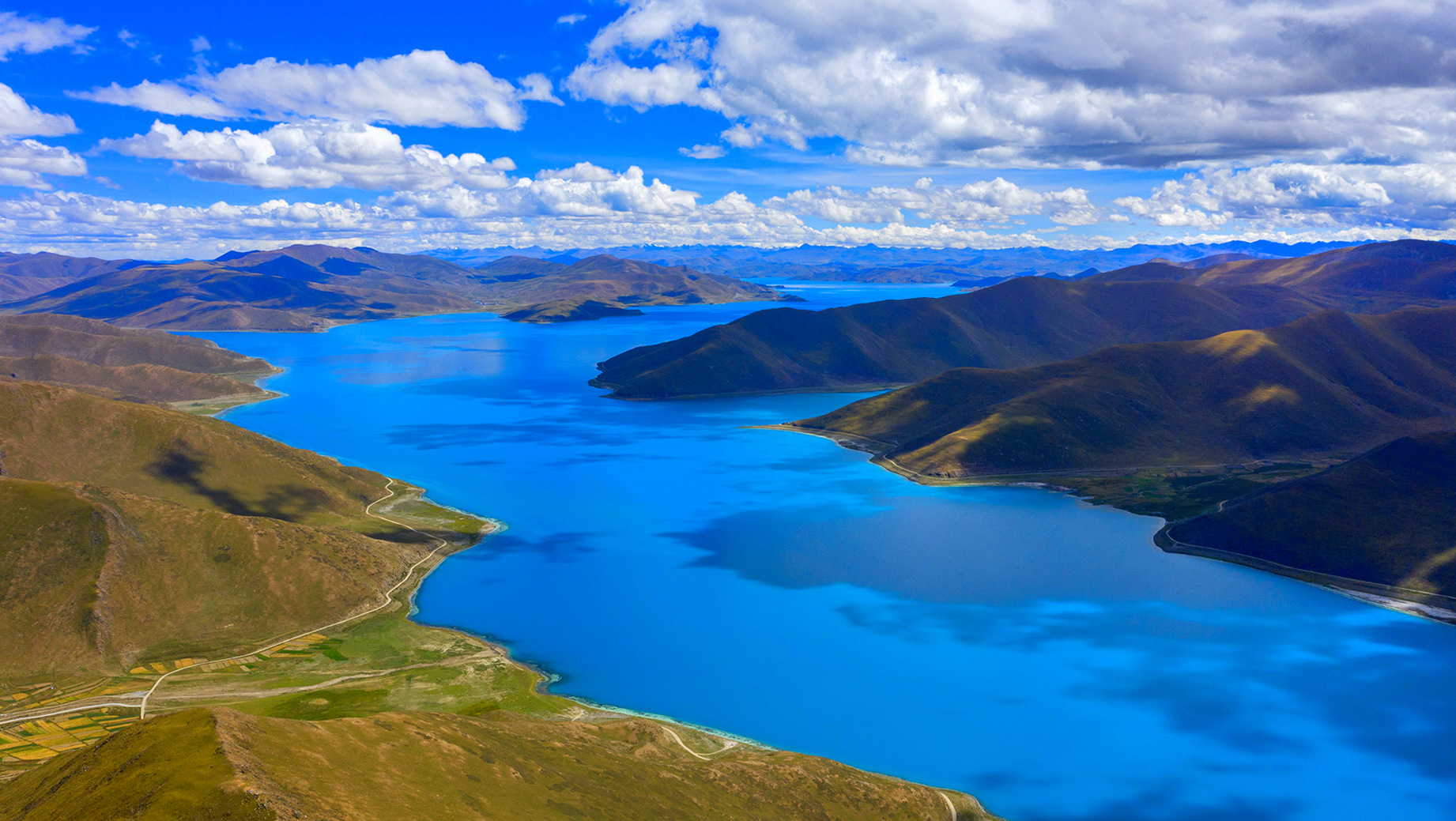
- Turquoise Waters: Capture the lake’s striking turquoise color, which contrasts beautifully with the surrounding snow-capped mountains.
- Mountain Backdrop: The majestic peaks encircling Yamdrok Lake provide a dramatic backdrop, enhancing the visual depth of your photographs.
- Clear Reflections: On calm days, the lake’s surface acts as a mirror, reflecting the mountains and sky, creating perfect symmetry and stunning reflections.
- Changing Light: The lake’s appearance changes with the light, offering different moods and colors from sunrise to sunset, ideal for capturing varied shots.
- Wide Angles: Utilize wide-angle lenses to capture expansive shots of the lake and its vast surroundings, emphasizing its grandeur and scale.
- Wildlife and Flora: Include the local flora and occasional wildlife, such as yaks grazing nearby, to add life and context to your landscape images.
- Aerial Perspectives: If possible, use drone photography to capture the lake from above, showcasing its unique shape and the surrounding landscape from a fresh perspective.
Yamdrok Lake photography provides an unparalleled opportunity to document the pristine natural beauty of Tibet. With its vivid colors, stunning reflections, and dramatic mountain scenery, Yamdrok Lake is a true gem for landscape photographers seeking to capture the magic of the Tibetan plateau.
Mount Everest Base Camp Photos
Mount Everest Base Camp offers an unparalleled opportunity to photograph the world’s highest peak from an awe-inspiring vantage point. Nestled in the Tibetan region, the base camp presents dramatic and breathtaking views of Everest’s north face, the surrounding peaks, and the rugged terrain of the Himalayas. Whether you're an avid landscape photographer or an adventure seeker, capturing the essence of this iconic location will provide some of the most memorable images of your journey.
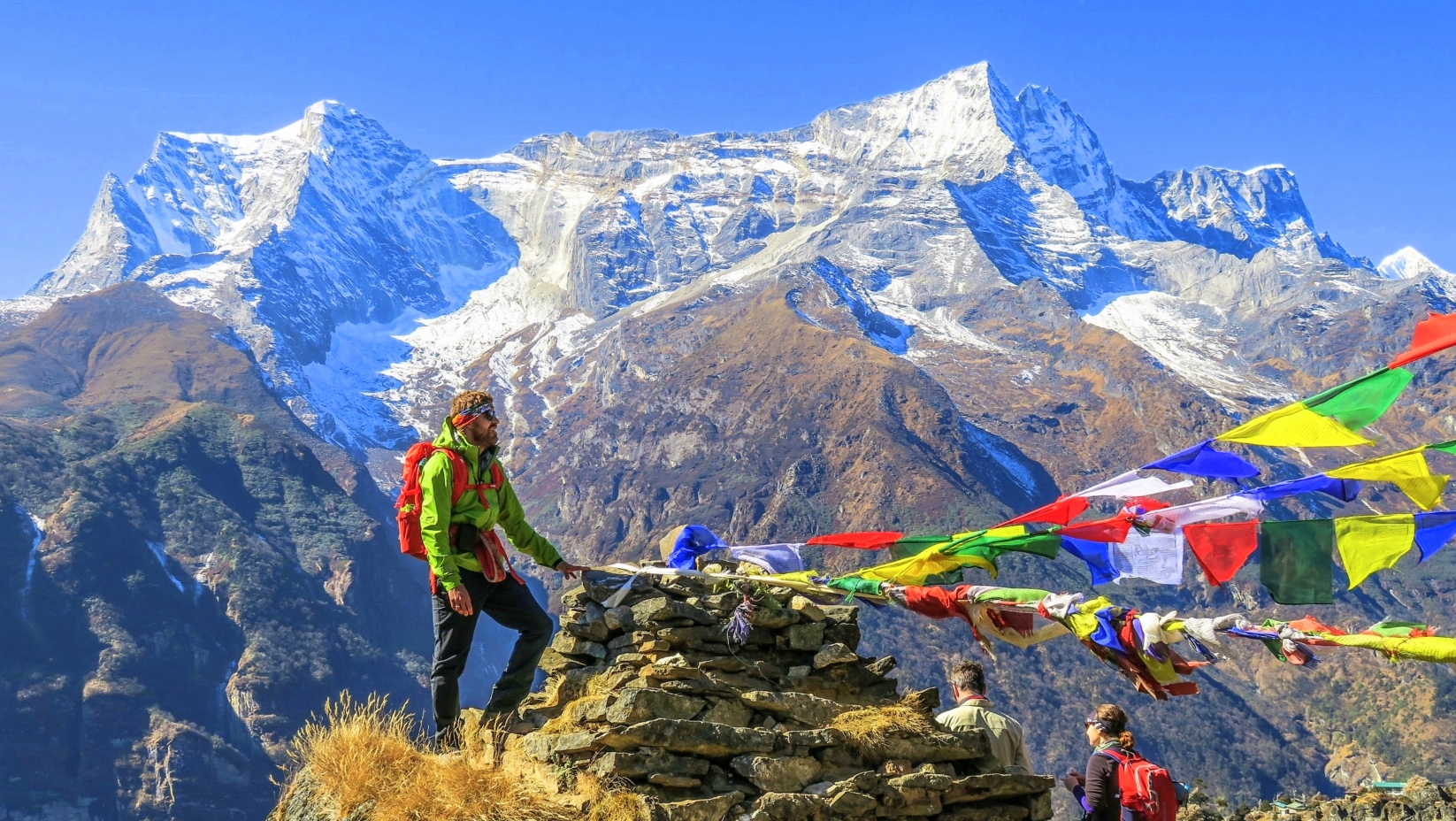
- Majestic Everest Views: Capture the awe-inspiring north face of Mount Everest, towering above the base camp and dominating the landscape.
- Dramatic Skies: The sky over Everest often features dramatic cloud formations, especially during sunrise and sunset, enhancing the grandeur of your shots.
- High-Altitude Light: The crisp, clear air at high altitudes offers exceptional visibility and vibrant colors, ideal for capturing stunning, high-contrast images.
- Mountainous Terrain: Photograph the rugged, rocky terrain of the base camp and the surrounding peaks, adding texture and depth to your landscape shots.
- Cultural Elements: Include the colorful prayer flags and base camp tents to add a cultural and human element to your photos, illustrating the vibrancy of the region.
- Starry Nights: The clear high-altitude skies are perfect for astrophotography, allowing you to capture star-studded night skies and the Milky Way.
- Sunrise and Sunset: The early morning and late evening light cast a magical glow over Everest and the surrounding landscape, creating ethereal and dramatic images.
Mount Everest Base Camp photos offer a unique opportunity to capture the majesty and grandeur of the world’s highest peak. From the dramatic mountain views and rugged terrain to the vibrant skies and cultural elements, each shot taken at this iconic location will reflect the profound beauty and spirit of the Himalayas.
Namtso Lake Photography Spots
Namtso Lake, often hailed as one of Tibet’s most stunning natural wonders, is renowned for its crystal-clear waters, dramatic mountain scenery, and tranquil ambiance. Situated at an elevation of about 4,718 meters (15,479 feet), this sacred lake offers photographers a range of breathtaking and serene scenes. Its pristine beauty and unique light conditions make it an exceptional location for capturing the essence of Tibet's natural landscape.
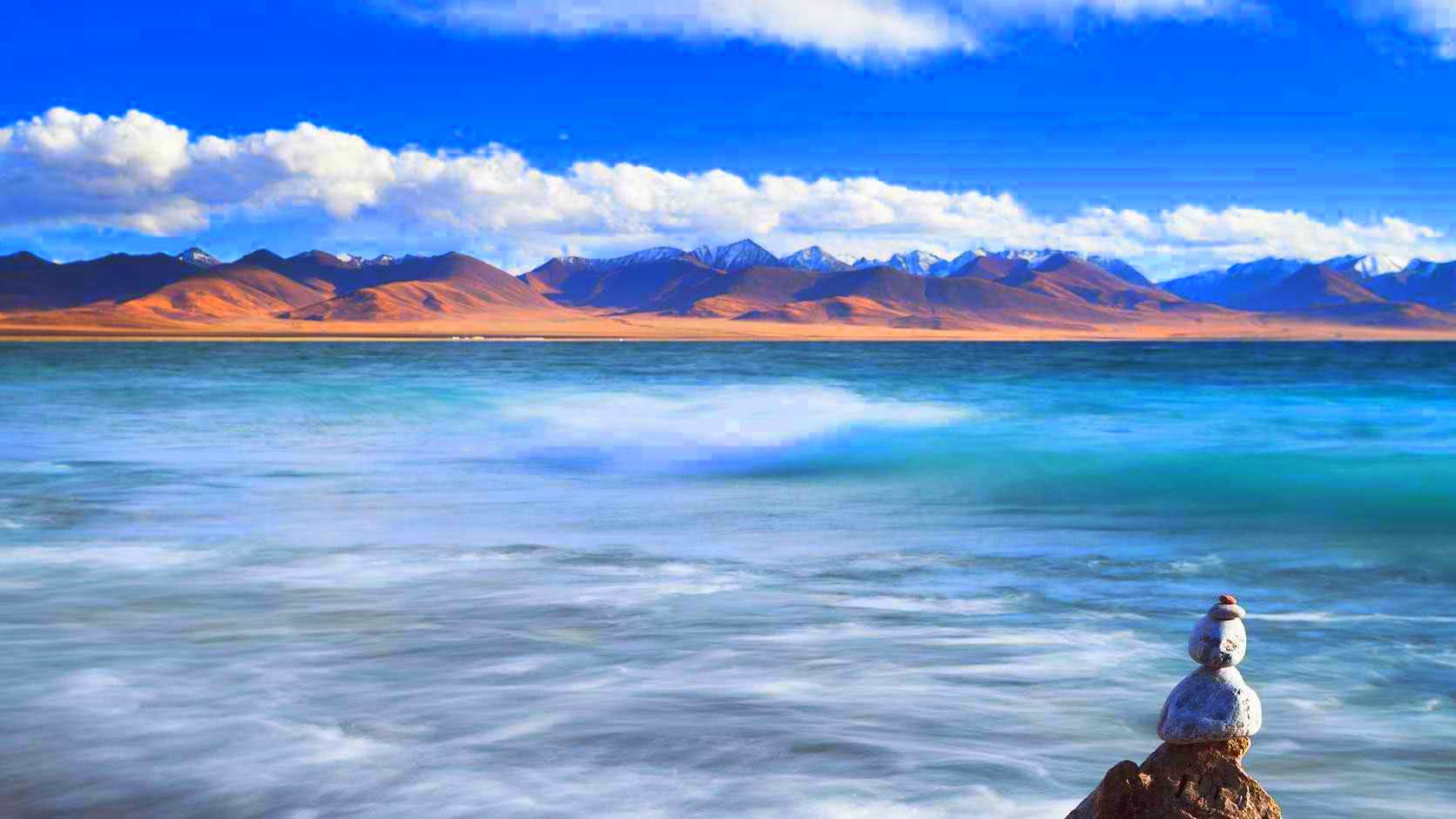
- Crystal-Clear Waters: Capture the lake’s pristine blue waters, which offer striking reflections of the surrounding peaks and sky, creating mirror-like images.
- Dramatic Mountain Backdrop: The Tanggula Mountains encircling Namtso Lake provide a majestic backdrop, enhancing the depth and scale of your landscape photographs.
- Color Variations: The lake’s color changes with the light and weather conditions, ranging from deep blues to turquoise, perfect for capturing a variety of moods.
- Wide-Angle Shots: Use wide-angle lenses to encompass the vast expanse of the lake and its surrounding landscape, emphasizing its grandeur and scale.
- Sunrise and Sunset: The soft light of dawn and dusk casts a golden glow over the lake and mountains, ideal for capturing serene and ethereal images.
- Local Wildlife: Include any local wildlife, such as Tibetan yaks or migratory birds, to add an element of life and context to your landscape photos.
- High-Altitude Perspectives: The high-altitude setting provides exceptionally clear air and vibrant colors, perfect for capturing the lake’s beauty in sharp detail.
Namtso Lake photography spots offer a diverse range of opportunities to capture one of Tibet’s most beautiful natural sites. From the crystal-clear waters and dramatic mountain backdrops to the changing light and local wildlife, every aspect of Namtso Lake presents a unique and stunning subject for any photographer.
Tashilhunpo Monastery Photography
Tashilhunpo Monastery, located in Shigatse, is one of Tibet's most significant religious sites and a treasure trove for photographers. As the seat of the Panchen Lama, this sprawling monastery is a masterpiece of Tibetan architecture and spirituality. Its vibrant colors, intricate details, and dynamic atmosphere offer a multitude of photographic opportunities that capture the essence of Tibetan Buddhism and monastic life.
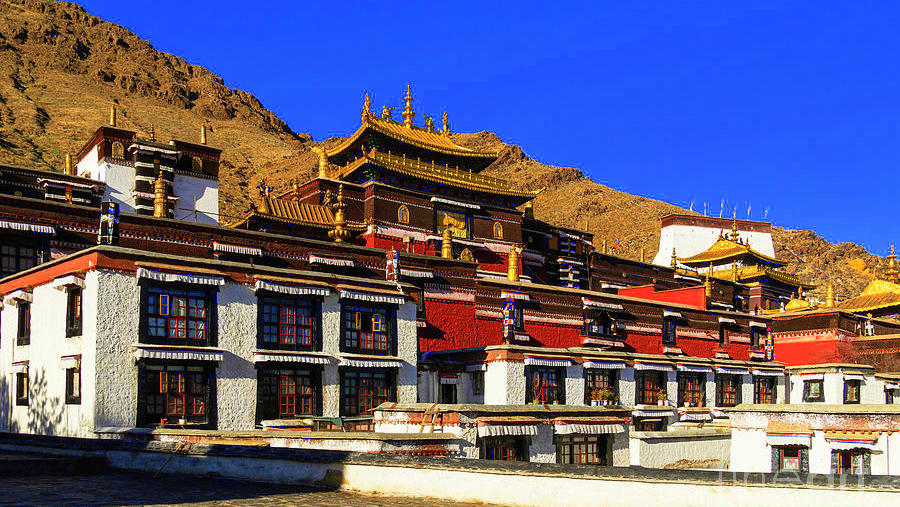
- Architectural Grandeur: Photograph the monastery’s impressive architecture, including its golden roofs, red and white walls, and ornate decorations that reflect traditional Tibetan craftsmanship.
- Monastic Interiors: Capture detailed murals, statues, and religious artifacts inside the monastery, showcasing the rich artistic heritage of Tibetan Buddhism.
- Religious Ceremonies: Document the vibrant religious ceremonies and rituals performed by the monks, providing dynamic and culturally rich subjects for your photos.
- Panoramic Views: Take advantage of elevated viewpoints around the monastery to capture sweeping views of Shigatse and the surrounding landscape.
- Colorful Details: The monastery’s colorful prayer flags, murals, and robes offer vivid contrasts and intricate details, enhancing the visual appeal of your shots.
- Monk Portraits: Photograph the monks in their traditional attire, engaged in daily activities or rituals, to capture the human aspect of monastic life.
- Sunrise and Sunset Light: The soft light of sunrise and sunset enhances the monastery's colors and details, creating a serene and atmospheric backdrop for your photos.
Tashilhunpo Monastery photography provides an exceptional opportunity to explore and document one of Tibet’s most revered religious sites. From its majestic architecture and detailed interiors to vibrant ceremonies and panoramic views, every aspect of Tashilhunpo Monastery offers unique and compelling subjects for photographers.
Gyantse Kumbum Photos
Gyantse Kumbum is one of Tibet's most unique and historic religious structures, renowned for its impressive architecture and intricate art. This multi-tiered stupa, located in the town of Gyantse, is a remarkable example of Tibetan religious architecture and provides a rich array of photographic opportunities. Its distinctive design and artistic details make it a must-visit for anyone interested in capturing the essence of Tibetan Buddhist culture.
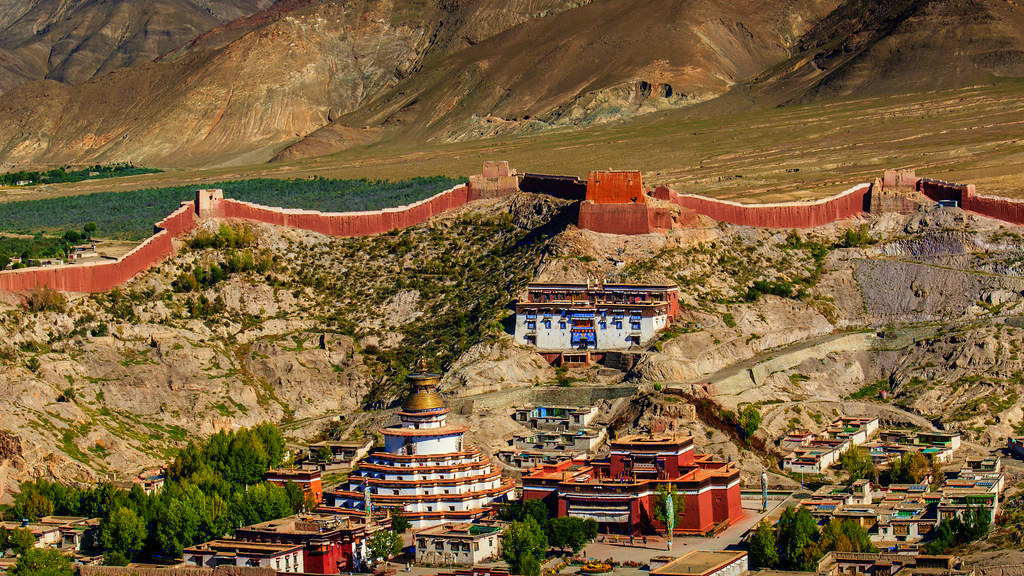
- Architectural Design: Photograph the unique multi-tiered structure of the Kumbum, with its blend of stupa and pagoda designs that create a visually striking silhouette against the sky.
- Detailed Murals: Capture the intricate murals and paintings inside the Kumbum’s chapels, depicting various deities, mandalas, and scenes from Tibetan Buddhist lore.
- Panoramic Views: Use elevated vantage points around the Kumbum to capture expansive views of the town of Gyantse and the surrounding landscape.
- Colorful Decorations: The vibrant colors of the Kumbum’s decorations, including its gold and red accents, provide rich visual contrasts for compelling photos.
- Sacred Relics: Document the sacred relics and artifacts housed within the Kumbum, highlighting their spiritual significance and artistic craftsmanship.
- Interior Chapels: Explore and photograph the numerous chapels within the Kumbum, each offering unique architectural and artistic features to capture.
- Local Pilgrims: Include images of local pilgrims and monks visiting the Kumbum, adding a human element and context to the spiritual significance of the site.
Gyantse Kumbum photos offer a unique glimpse into Tibetan religious architecture and art. From its distinctive multi-tiered design and intricate murals to the colorful decorations and sacred relics, Gyantse Kumbum provides a wealth of photographic opportunities that beautifully capture the spiritual and artistic heritage of Tibet.
Mount Kailash Photography
Mount Kailash is one of the most revered peaks in Tibet, considered sacred by several religions including Hinduism, Buddhism, Jainism, and Bon. Its striking, symmetrical peak and the surrounding rugged terrain offer photographers a unique opportunity to capture the spiritual and natural grandeur of this iconic mountain. The majestic views of Mount Kailash are not only visually stunning but also imbued with deep spiritual significance, making it a captivating subject for photography.
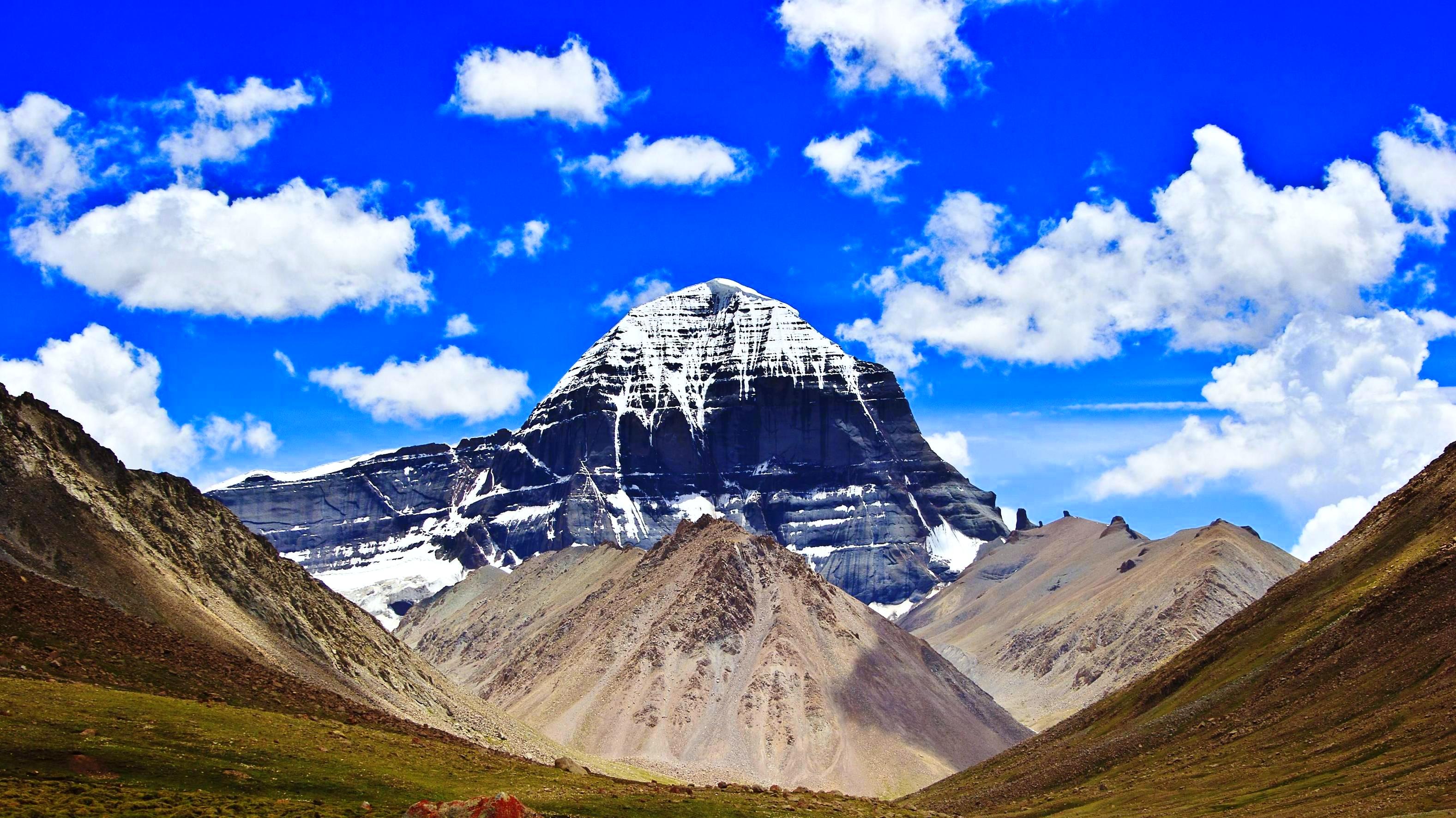
- Symmetrical Peak: Capture the iconic, symmetrical shape of Mount Kailash, which stands out prominently against the sky and offers a striking focal point for your images.
- Sacred Pilgrimage Circuit: Photograph the sacred Kailash Kora (pilgrimage circuit) with its diverse landscapes, including high-altitude plains, rocky paths, and spiritual landmarks along the route.
- Surrounding Peaks: Include the surrounding peaks and glaciers in your shots to add context and emphasize the grandeur of Mount Kailash’s environment.
- Changing Light: The light changes throughout the day, with morning and evening providing particularly dramatic and soft lighting that enhances the mountain's features.
- Reflections and Lake Views: Capture reflections of Mount Kailash in nearby lakes such as Lake Manasarovar, which provides stunning symmetrical shots and a serene backdrop.
- Pilgrims and Rituals: Document the pilgrims and their rituals around Mount Kailash to add a human element and convey the spiritual significance of the location.
- High-Altitude Perspective: Utilize the clear, high-altitude atmosphere to capture crisp, detailed images of the mountain and surrounding landscape with exceptional clarity.
Mount Kailash photography offers a rare chance to capture one of Tibet’s most sacred and visually stunning peaks. From its symmetrical summit and dramatic landscapes to the reflections in sacred lakes and the vibrant pilgrimage circuit, every aspect of Mount Kailash provides a unique and compelling subject for photographers.
Shigatse Dzong Photos
Shigatse Dzong, perched on a hill overlooking the town of Shigatse, is a historic fortress that offers a rich tapestry of visual and cultural elements for photographers. As a significant historical and strategic site, the dzong provides dramatic views, architectural grandeur, and a glimpse into Tibet's past. Its commanding position and well-preserved structure make it a fantastic subject for capturing the essence of Tibetan heritage and landscape.

- Imposing Architecture: Photograph the fortress’s robust and commanding architecture, with its traditional Tibetan design and strategic position dominating the landscape.
- Panoramic Views: Capture expansive views of Shigatse town and the surrounding countryside from the dzong’s elevated position, especially striking during sunrise and sunset.
- Historical Details: Document the intricate details of the dzong’s construction, including its thick walls, ancient gates, and battlements that reflect its historical significance.
- Contrasting Landscapes: The dzong’s position provides a stark contrast against the backdrop of the town and the distant mountains, offering dramatic and visually interesting compositions.
- Cultural Elements: Include local scenes such as traditional Tibetan activities or festivals taking place near the dzong to add context and depth to your photos.
- Colorful Roofs: Capture the colorful rooftops and traditional Tibetan decorations, which provide vibrant contrasts against the fortress’s more subdued tones.
- Architectural Features: Focus on specific architectural features, such as the dzong’s towers and watchtowers, which highlight its defensive and historical role.
Shigatse Dzong photos offer a captivating glimpse into Tibet’s historical and architectural heritage. From its imposing architecture and panoramic views to its historical details and vibrant cultural elements, the dzong provides a wealth of subjects for photographers seeking to document the richness and depth of Tibetan history and landscape.
Sera Monastery Photography
Sera Monastery, located in Lhasa, is one of Tibet's most prominent and vibrant monastic institutions. Known for its rich history, architectural beauty, and the dynamic debates held by the monks, Sera Monastery offers a unique and engaging subject for photographers. Whether capturing the lively debates or the intricate details of the monastery’s architecture, Sera provides a wealth of opportunities to document Tibetan Buddhist culture and monastic life.
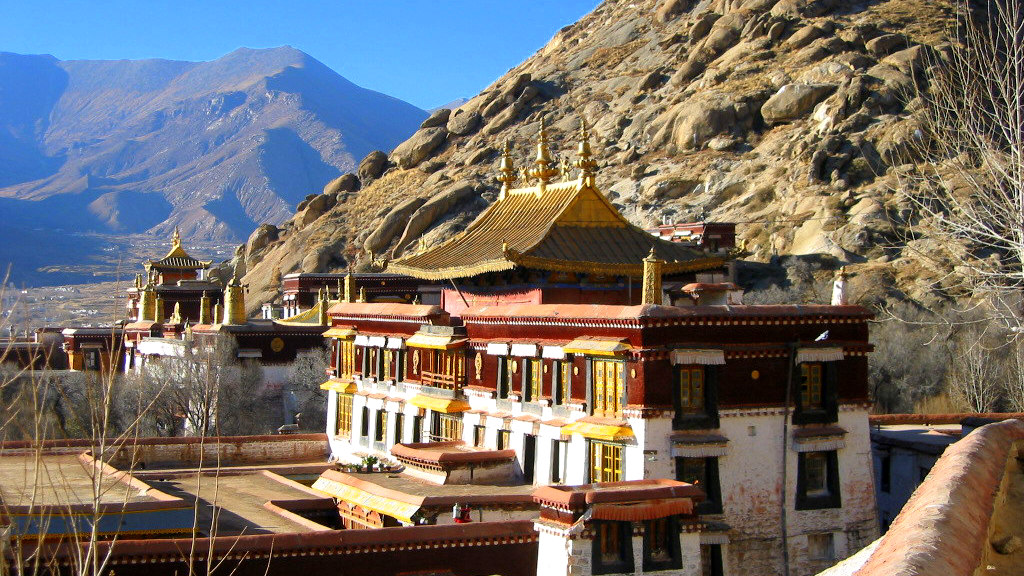
- Monk Debates: Capture the lively and spirited debates among the monks, which are a key feature of Sera Monastery. The dynamic gestures and expressions make for engaging and dramatic photos.
- Architectural Beauty: Photograph the monastery’s traditional Tibetan architecture, including its red and white buildings, golden roofs, and intricate details that reflect its historical significance.
- Cultural Scenes: Document the daily life of the monks, including their rituals, prayers, and interactions, to capture the essence of monastic life and Tibetan Buddhist practices.
- Vibrant Colors: The colorful robes of the monks, traditional decorations, and vibrant murals add rich visual elements to your photographs.
- Prayer Wheels and Flags: Include images of prayer wheels and flags, which are integral to the monastery’s religious practices and add dynamic elements to your shots.
- Interior Murals: Inside the monastery, photograph the detailed murals and religious artifacts that showcase Tibetan Buddhist art and iconography.
- Sunlight and Shadows: Utilize the interplay of sunlight and shadows, particularly in the monastery’s courtyards and prayer halls, to create dramatic and atmospheric images.
Sera Monastery photography offers a rich and diverse range of subjects to explore. From the spirited monk debates and vibrant cultural scenes to the architectural beauty and detailed murals, Sera Monastery provides a captivating glimpse into Tibetan Buddhist monastic life and artistry.
Best Time for a Photography Tour in Tibet
Planning a photography tour in Tibet requires careful consideration of the seasonal variations and unique weather conditions of this high-altitude region. Each season in Tibet offers distinct photographic opportunities, from vibrant festivals to serene landscapes. Here’s a guide to help you choose the best time for your photographic journey.
Spring (April to June)
- Ideal Weather: Spring is one of the best times to visit Tibet for photography, as the weather is mild and the skies are clear. This is perfect for capturing the vibrant colors and landscapes.
- Floral Blooms: The valleys and meadows come to life with wildflowers, adding a burst of color to your landscape shots.
- Festivals: Spring is a festive season in Tibet, offering opportunities to photograph traditional Tibetan festivals and cultural events.
Summer (July to August)
- Lush Landscapes: Summer brings lush greenery and full rivers, providing stunning backdrops for your photos.
- Cloud Formations: The monsoon season creates dramatic cloud formations over the mountains, adding depth and interest to your images.
- High Tourist Season: While summer is popular with tourists, early mornings and late evenings offer quieter times for photography.
Autumn (September to October)
- Crystal Clear Skies: Autumn is considered the best time for photography in Tibet, with crisp air and clear skies providing excellent visibility for capturing distant mountains and landscapes.
- Rich Colors: The autumnal colors enhance the beauty of the landscapes, making it a perfect time for Tibet landscape photography.
- Cultural Activities: Many Tibetan festivals take place during this time, offering rich cultural scenes to capture.
Winter (November to March)
- Snow-Capped Peaks: Winter offers a unique opportunity to photograph Tibet’s snow-capped peaks and serene, less-crowded landscapes.
- Fewer Tourists: With fewer tourists, you can capture the tranquil beauty of Tibet without distractions.
- Challenging Conditions: Be prepared for cold temperatures and potential travel restrictions due to snow, but the rewards are unique and pristine shots of Tibet in winter.
The best time for a photography tour in Tibet depends on your interests and the specific scenes you wish to capture. Whether it's the lush landscapes of summer, the vibrant colors of autumn, or the serene beauty of winter, Tibet offers a diverse range of photographic opportunities throughout the year.
Essential Tips for Photography in Tibet
Photographing the stunning landscapes and rich cultural heritage of Tibet can be an incredibly rewarding experience. However, the region's unique environment and high altitude present certain challenges. Here are some essential tips to help you make the most of your photography journey in Tibet.
Prepare for High Altitude
- Acclimatize Gradually: Spend a few days acclimatizing in Lhasa or other high-altitude areas to avoid altitude sickness. This is crucial for both your health and your ability to focus on photography.
- Stay Hydrated: Drink plenty of water to stay hydrated and help your body adjust to the altitude.
- Carry Altitude Medication: Consider carrying altitude sickness medication after consulting with a healthcare professional.
Bring the Right Equipment
- Wide-Angle Lenses: Use wide-angle lenses for capturing expansive landscapes and architectural shots of monasteries and palaces.
- Telephoto Lenses: A telephoto lens is useful for capturing distant mountain peaks and wildlife without disturbing them.
- Tripod: A sturdy tripod is essential for long exposure shots and night photography, especially at high altitudes.
- Extra Batteries: Cold temperatures can drain batteries quickly, so bring extras and keep them warm in your pockets.
Capture the Unique Light
- Golden Hours: Take advantage of the golden hours—early morning and late afternoon—when the light is soft and casts a warm glow on the landscapes.
- Night Photography: Tibet’s high altitude and clear skies make it ideal for night photography. Capture stunning shots of the Milky Way and starry skies.
Respect Local Customs
- Ask for Permission: Always ask for permission before photographing people, especially monks and locals in sacred areas.
- Be Mindful of Religious Sites: Some areas, particularly inside monasteries, may have restrictions on photography. Respect signs and guidelines.
Plan for the Weather
- Layered Clothing: Wear layered clothing to adapt to Tibet’s variable weather, which can change rapidly from sunny to cold and windy.
- Protect Your Gear: Use protective covers for your camera and lenses to shield them from dust and sudden rain.
Explore Cultural Events
- Festivals: Attend local festivals and ceremonies to capture vibrant and dynamic scenes that showcase Tibetan culture and traditions.
- Monastic Life: Photograph the daily life and rituals of monks in monasteries, offering a glimpse into the spiritual heart of Tibet.
Capture Diverse Landscapes
- Mountain Vistas: Tibet offers spectacular mountain vistas, including the majestic peaks of the Himalayas. Use wide-angle lenses to capture their grandeur.
- Lakes and Rivers: Include reflections in lakes and rivers to add depth and interest to your landscape shots.
Be Patient and Observant
- Wait for the Moment: Be patient and wait for the right moment to capture perfect compositions and natural light.
- Observe Details: Pay attention to small details, such as prayer flags, traditional clothing, and architectural elements, that tell a story about the region.
By following these essential tips, you can capture the magic of Tibet through your photography, creating stunning images that reflect the beauty and culture of this extraordinary land.
Discovering the top photography spots in Tibet reveals the region’s breathtaking beauty and deep spirituality. From the iconic Potala Palace and serene Jokhang Temple to the stunning vistas of Yamdrok Lake and the majestic Mount Everest Base Camp, Tibet offers a wealth of captivating subjects. Capture the pristine waters of Namtso Lake, the historical grandeur of Tashilhunpo Monastery, the intricate artistry of Gyantse Kumbum, and the sacred peak of Mount Kailash. With Druk Holidays guiding your journey, you’ll experience the magic of Tibet through remarkable and unforgettable images.
FAQs of the Top Photography Spots in Tibet: Capture the Magic
Q: What is the best time of year for photographing Tibet?
A: The best time for photography in Tibet is during the autumn months of September and October when the air is crisp, the skies are clear, and landscapes are rich with color. However, each season offers unique photographic opportunities.
Q: Do I need special permits for photography in Tibet?
A: Yes, you will need a Tibet Travel Permit and possibly additional permits for specific regions. It’s important to arrange these permits in advance with a licensed travel agency.
Q: What type of camera equipment is recommended for photographing in high altitudes?
A: Bring a sturdy tripod, a wide-angle lens for landscapes, a telephoto lens for distant shots, and extra batteries as cold temperatures can affect battery life.
Q: Are there restrictions on photographing religious sites in Tibet?
A: Photography is generally allowed, but restrictions may apply in certain areas or during ceremonies. Always seek permission and respect local customs and guidelines.
Q: What should I wear for a photography trip to Tibet?
A: Dress in layers to accommodate varying temperatures. Include warm clothing, especially for high-altitude locations, and comfortable shoes for exploring.
Q: When is the best time to photograph the Tibetan monasteries?
A: The best time is usually in the morning or late afternoon when the light is soft and golden, enhancing the details and colors of the monasteries.
Q: Can I capture good photos of Tibet’s landscapes in winter?
A: Yes, winter provides stunning snow-capped peaks and serene landscapes. However, be prepared for cold temperatures and potential travel disruptions due to snow.
Q: How can I photograph the local festivals and ceremonies?
A: Attend festivals during their scheduled times and be respectful. Capture candid moments and the vibrant colors of traditional attire and rituals.
Q: What are some tips for photographing the night sky in Tibet?
A: Use a tripod and a wide-aperture lens to capture clear night skies. The high altitude and low light pollution make Tibet ideal for astrophotography.
Q: How can I ensure the safety of my camera equipment in Tibet?
A: Use protective cases and covers to shield your gear from dust and sudden weather changes. Keep batteries warm and protect lenses from scratches and damage.

